
Other animals, like the stork, have developed into task-masters for specific mythical chores. European legend informs us that the souls of unborn babies dwell in swamps and lakes, and that storks who frequent such places will often pluck the unborn children from the water and carry them to the homes of expectant parents.
Category All / All
Species Unspecified / Any
Gender Any
Size 475 x 555px
File Size 155.4 kB
Just a tip: You might want to look into some of the older German books for children:p I think you will be both shocked and humored at the same time;)
In Norway, from mythical stories, we have this "thing"(Like, some kind of troll i think) called "Nøkken" that resides in swamps and lakes. It's purpose is to lure people into the water, then nab and drown them:p You can only see this creature at dawn and after it's dark outside:)
http://www.museumsnett.no/nordnorsk.....-%20nokken.jpg
In Norway, from mythical stories, we have this "thing"(Like, some kind of troll i think) called "Nøkken" that resides in swamps and lakes. It's purpose is to lure people into the water, then nab and drown them:p You can only see this creature at dawn and after it's dark outside:)
http://www.museumsnett.no/nordnorsk.....-%20nokken.jpg
Well, i'm not from Germany(that sounds like a german word). Germany may have their own word for this as the Nøkken /is/ from the mytohology of the nordic countries(Denmark, Finland, Sweden and Germany). This drawing however, is made by Theodor Kittelsen, a Norwegian artist.
The original "Nøkken", also by Theodor Kittelsen, looks like this:
http://mikro.nasjonalmuseet.no/kitt.....KH.B.03202.jpg
But do note that Kittelsen did not /invent/ this creature. It's been talked about in lore for many generations before him. I can't verify that, but i belive that's how it goes. Kittelsen marely illustrated what had been in peoples imaginations for generations...
And because of the timeline, this might not even be a Norwegian created legend. Norway has been under the control of both Denmark /and/ Sweden up through the years, and this creature is much older than Norway as an independent country is. But i do not know our history that well to give you any more in-dept information than that...
The original "Nøkken", also by Theodor Kittelsen, looks like this:
http://mikro.nasjonalmuseet.no/kitt.....KH.B.03202.jpg
But do note that Kittelsen did not /invent/ this creature. It's been talked about in lore for many generations before him. I can't verify that, but i belive that's how it goes. Kittelsen marely illustrated what had been in peoples imaginations for generations...
And because of the timeline, this might not even be a Norwegian created legend. Norway has been under the control of both Denmark /and/ Sweden up through the years, and this creature is much older than Norway as an independent country is. But i do not know our history that well to give you any more in-dept information than that...
heh* I was rather 'quoting' that Ronja novel/movie. in the german overdub they used creature names like Donnerdrummel and Rumpelwicht.
besides, "Nockenwelle" is german for "camshaft". I am an automobilist, so sue me. :)
nice drawing, btw. I believe someone has gotten inspired by it for a RPG monster handbook illustration some years ago.
besides, "Nockenwelle" is german for "camshaft". I am an automobilist, so sue me. :)
nice drawing, btw. I believe someone has gotten inspired by it for a RPG monster handbook illustration some years ago.
Ah, but the "Ronja Røverdatter" story isn't actually Norwegian:p That's a Swedish made story by Astrid Lindgren. I'm not sure what it's called in Sweden, but i don't think they call it that... If it had a German overdub, i'm pretty sure it's only called that in Germany:p
And really? what RPG? I'd like to see that:p I've only seen the Norwegian versions of this creature^^,
You can look at this page if you want to see more of this artist:
http://mikro.nasjonalmuseet.no/kitt.....trollskap.shtm
You prolly don't understand the language, but just click on the links and on the pictures to make them bigger:)
And really? what RPG? I'd like to see that:p I've only seen the Norwegian versions of this creature^^,
You can look at this page if you want to see more of this artist:
http://mikro.nasjonalmuseet.no/kitt.....trollskap.shtm
You prolly don't understand the language, but just click on the links and on the pictures to make them bigger:)
oh yes, LIndgren is swedish, my bad. :) those names were made up by the guy who first translated the Ronja book(s) I guess. I never heard about them outside that environment.
I would habve to dig through my books, and maybe I'm wrong, but I think it, or something along that line, was to be seen in the bestiary that accompanies the Palladium fantasy RPG. it must be out of print by now for a couple years, but maybe you can find it. Kevin Siembieda has a nice illustration style with pencils, but his rules design was a little tiresome...
and thank you for the link, I'll look through it soon.
I would habve to dig through my books, and maybe I'm wrong, but I think it, or something along that line, was to be seen in the bestiary that accompanies the Palladium fantasy RPG. it must be out of print by now for a couple years, but maybe you can find it. Kevin Siembieda has a nice illustration style with pencils, but his rules design was a little tiresome...
and thank you for the link, I'll look through it soon.
En nøkk/nøkken is in German ein Nix/der Nix, while in English it's called a Neck/the Neck - in Swedish it's en Näck/Näcken. It's a male creature in Scandinavia. German folklore also ahs a female version, die Nixe/Nixie, but I don't think that has an equivalent in current Scandinavian folklore. It seems to be a myth common to all Germanic cultures.
ah! thank you for the translation! modern day folkore rather uses female Nixes, and they are not often evil, but merely water spirits inhabiting springs and magical fountains.
you're right, the german version is a good bit different to their nordic cousins; this seems the case as often as they are essentially the same here and up in scandinavia.
you're right, the german version is a good bit different to their nordic cousins; this seems the case as often as they are essentially the same here and up in scandinavia.

 FA+
FA+








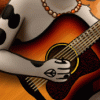




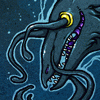




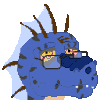
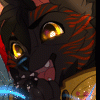

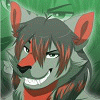
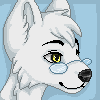
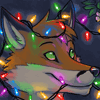
Comments